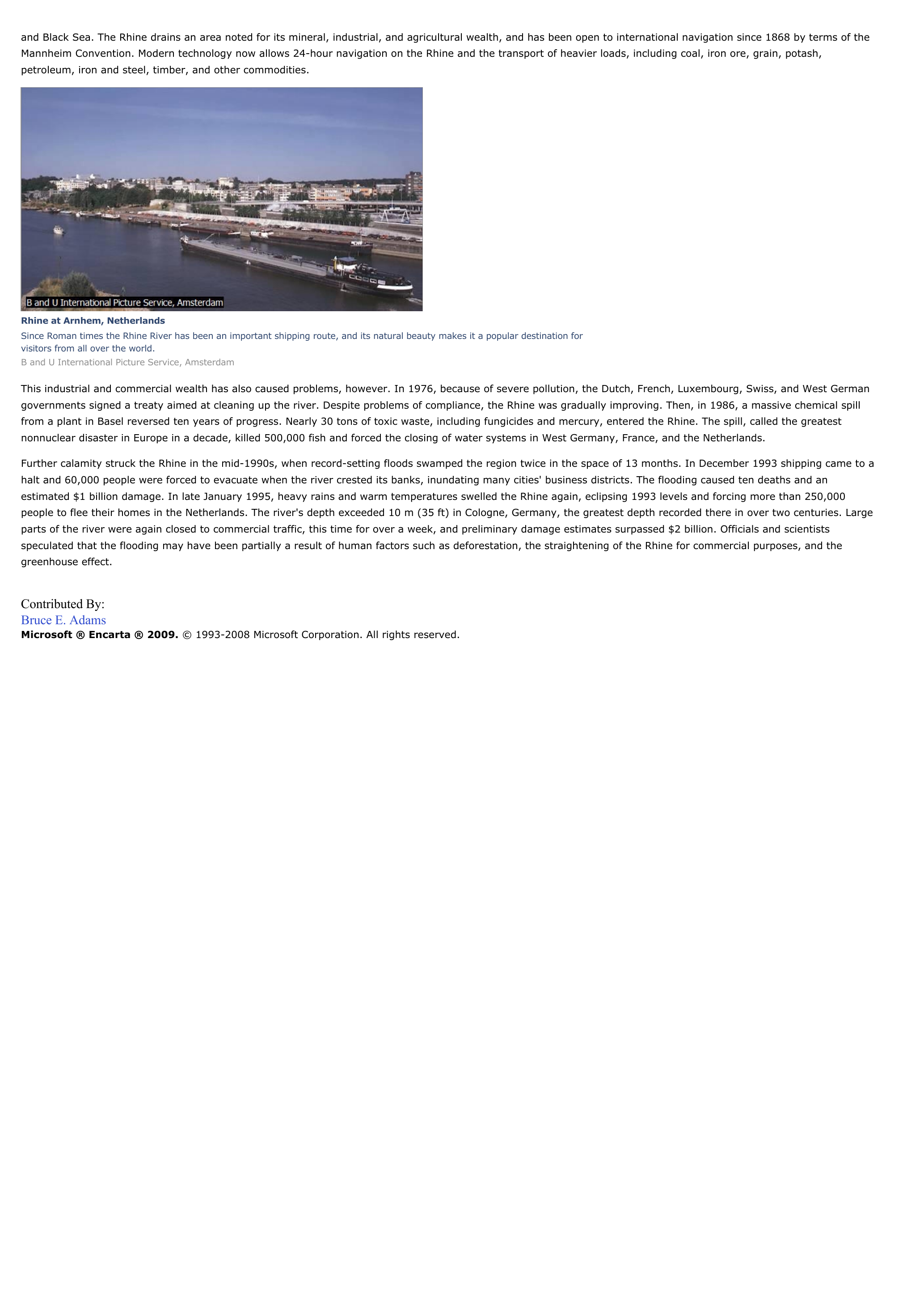Rhine - geography.
Publié le 26/05/2013

Extrait du document
«
and Black Sea.
The Rhine drains an area noted for its mineral, industrial, and agricultural wealth, and has been open to international navigation since 1868 by terms of theMannheim Convention.
Modern technology now allows 24-hour navigation on the Rhine and the transport of heavier loads, including coal, iron ore, grain, potash,petroleum, iron and steel, timber, and other commodities.
Rhine at Arnhem, NetherlandsSince Roman times the Rhine River has been an important shipping route, and its natural beauty makes it a popular destination forvisitors from all over the world.B and U International Picture Service, Amsterdam
This industrial and commercial wealth has also caused problems, however.
In 1976, because of severe pollution, the Dutch, French, Luxembourg, Swiss, and West Germangovernments signed a treaty aimed at cleaning up the river.
Despite problems of compliance, the Rhine was gradually improving.
Then, in 1986, a massive chemical spillfrom a plant in Basel reversed ten years of progress.
Nearly 30 tons of toxic waste, including fungicides and mercury, entered the Rhine.
The spill, called the greatestnonnuclear disaster in Europe in a decade, killed 500,000 fish and forced the closing of water systems in West Germany, France, and the Netherlands.
Further calamity struck the Rhine in the mid-1990s, when record-setting floods swamped the region twice in the space of 13 months.
In December 1993 shipping came to ahalt and 60,000 people were forced to evacuate when the river crested its banks, inundating many cities' business districts.
The flooding caused ten deaths and anestimated $1 billion damage.
In late January 1995, heavy rains and warm temperatures swelled the Rhine again, eclipsing 1993 levels and forcing more than 250,000people to flee their homes in the Netherlands.
The river's depth exceeded 10 m (35 ft) in Cologne, Germany, the greatest depth recorded there in over two centuries.
Largeparts of the river were again closed to commercial traffic, this time for over a week, and preliminary damage estimates surpassed $2 billion.
Officials and scientistsspeculated that the flooding may have been partially a result of human factors such as deforestation, the straightening of the Rhine for commercial purposes, and thegreenhouse effect.
Contributed By:Bruce E.
AdamsMicrosoft ® Encarta ® 2009. © 1993-2008 Microsoft Corporation.
All rights reserved..
»
↓↓↓ APERÇU DU DOCUMENT ↓↓↓
Liens utiles
- Rhine - Geography.
- Rhine, Joseph Banks - psychologie & psychanalyse.
- Tokyo - geography.
- Toronto - geography.
- Venice (Italy) - geography.

































